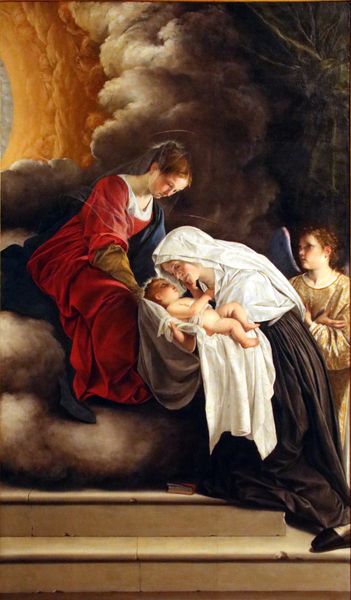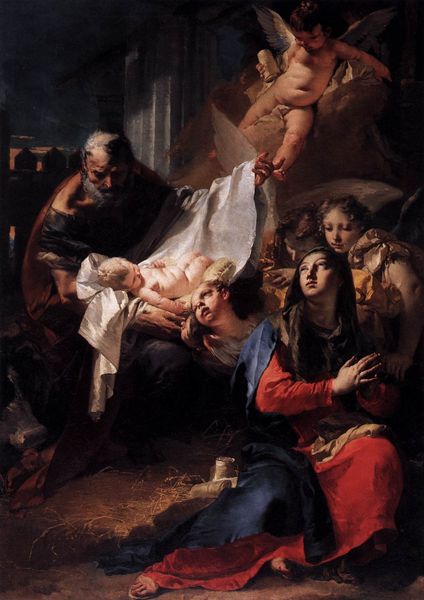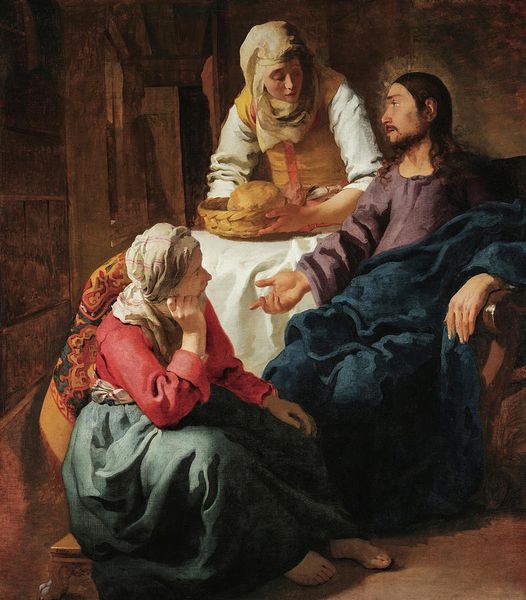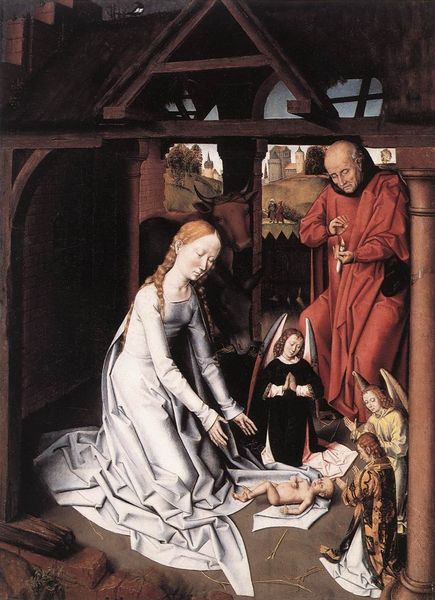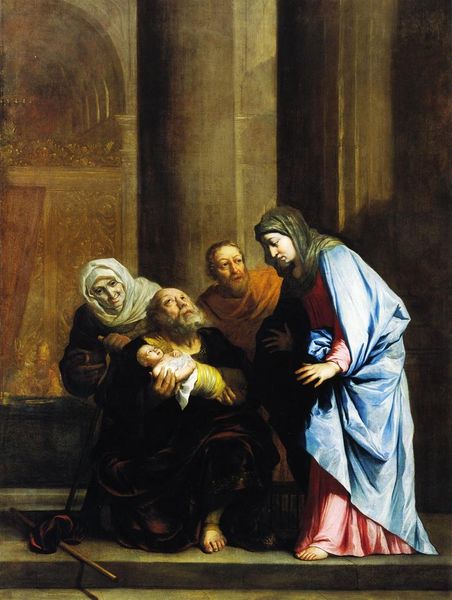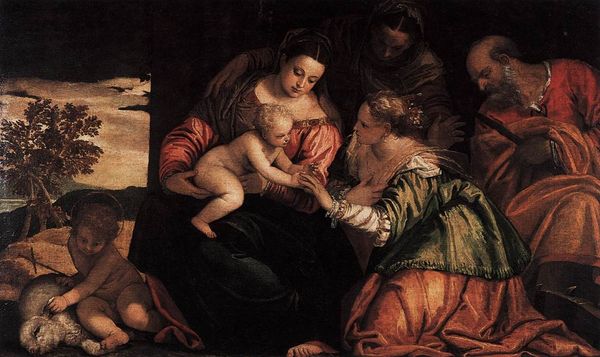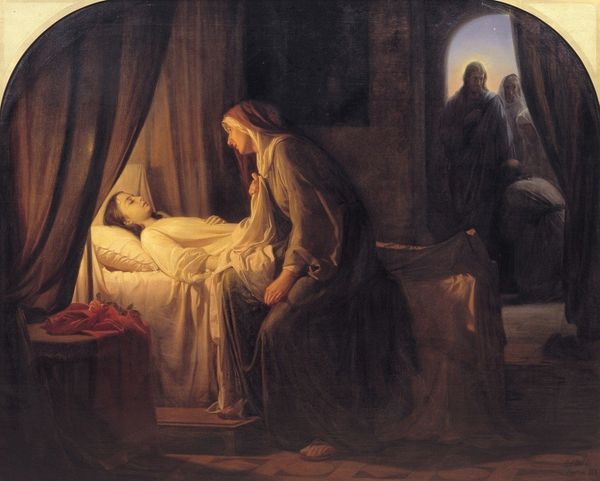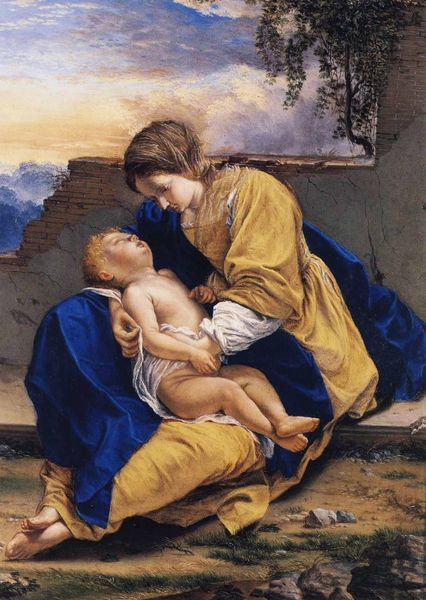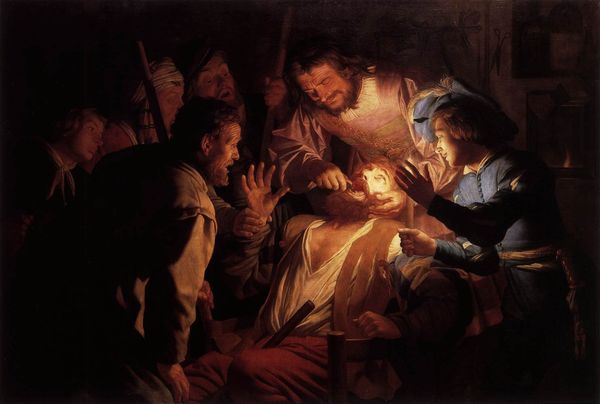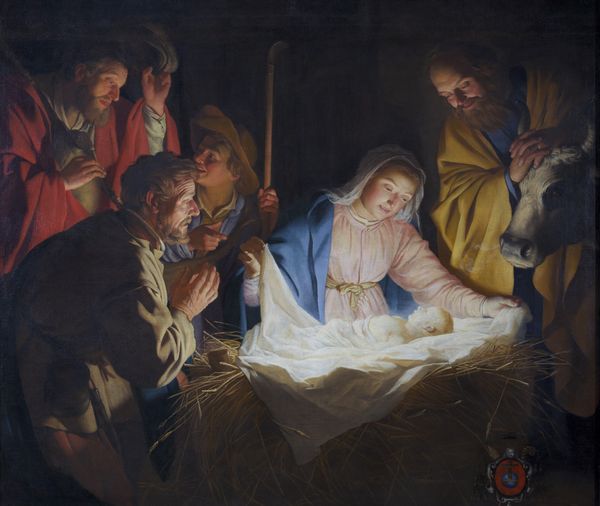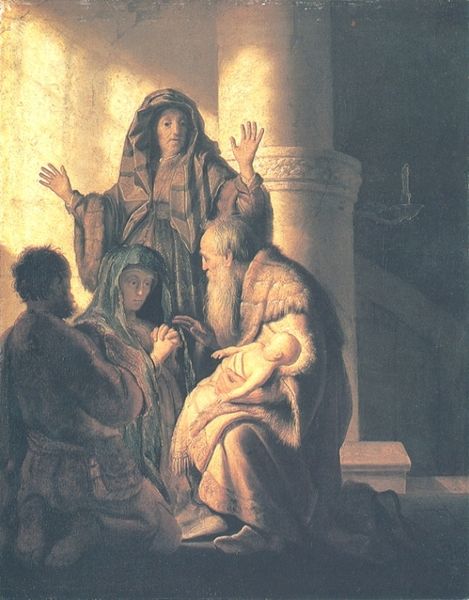
#
sculpture
#
portrait subject
#
possibly oil pastel
#
oil painting
#
animal portrait
#
3d art
#
portrait art
#
fine art portrait
#
celebrity portrait
#
digital portrait
Copyright: Public domain
Editor: This is "The Annunciation" by Orazio Gentileschi, painted in 1623. The rich colours, the heavy fabric, the light on the angel's wing – it’s so dramatic. What strikes you most about its visual impact? Curator: The dramatic interplay of light and shadow is certainly central. Observe how Gentileschi uses light to sculpt the forms, particularly the angel's robes. The textures, masterfully rendered, create a palpable tension against the smoother drapery behind Mary. Note also the pyramidal structure, grounding the ethereal event in a stable, earthly reality. Does the color palette seem unified or disparate to you? Editor: I see it now – how the golden yellow of the angel’s clothes is pulled out from the deep red behind Mary. So, these two figures become these strong vertical blocks, playing against the architecture behind them, really activating the plane of the painting. The wings also draw the eye upwards in the composition. But I didn't realize the colour connected the figures initially. What about that dramatic red? It overwhelms the scene in some ways, don't you think? Curator: The dominance of the red, I agree, contributes significantly to the work's dynamism. It serves not only as a backdrop, highlighting the figures in the foreground, but it's intrinsic material presence as oil paint announces its physicality through that strong use of colour. Its textural and chromatic intensity draws the viewer into the emotional core of the scene. The dove near the window provides an aperture in this strong visual language, though – its position drawing light from an unseen realm. Does this not perhaps also indicate how the material reality is challenged and enhanced in this representational form? Editor: I hadn’t really looked at that window detail but now I see the sharp contrast of the soft plumage of the angel wing being counterpointed in that far, distant, bright light near the window. It offers a release and an added compositional tool to focus our attention. Curator: Exactly. In dissecting its components, we can arrive at a better recognition of its visual argument. Editor: Thanks. Looking closer has shown me the dialogue between colour, form, light and the arrangement of it all to portray this momentous occasion.
Comments
No comments
Be the first to comment and join the conversation on the ultimate creative platform.
